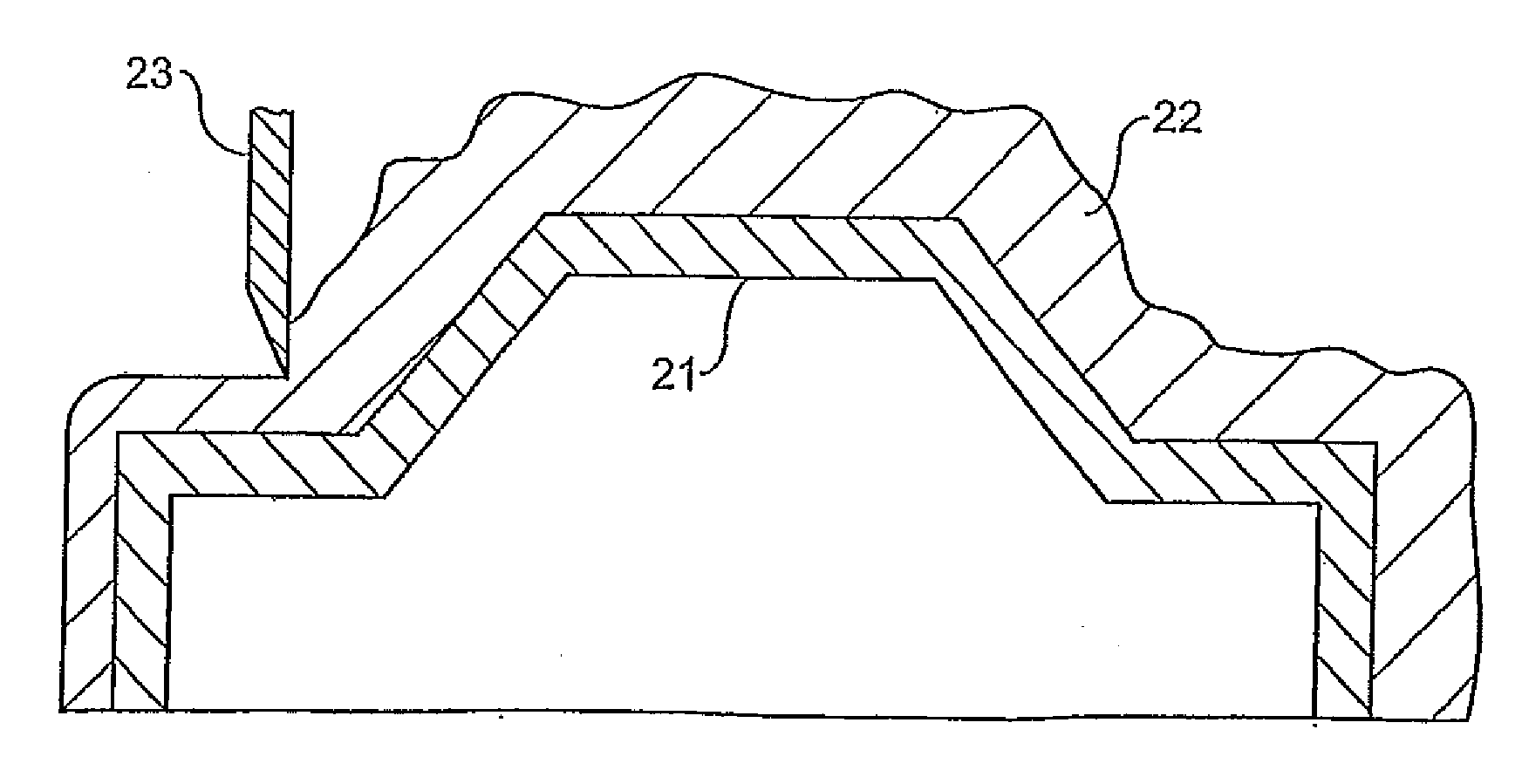Method of making models
a model and model technology, applied in the direction of coatings, etc., can solve the problems of high cost and again labour-intensive approach, and achieve the effect of reducing the amount of syntactic material used, and reducing the dimensional change as the result of moisture absorption
- Summary
- Abstract
- Description
- Claims
- Application Information
AI Technical Summary
Benefits of technology
Problems solved by technology
Method used
Image
Examples
examples 2-5 (comparative)
[0063]The same general procedure of Example 1 is followed, except that the formulations noted in Table 2 below are used. The properties of the pastes so prepared show that these formulations are inferior for the preparation of a seamless modelling paste due to the poor dispensing characteristics as indicated by the low or high resistance to sag of the dispensed paste.
TABLE 2Comparative formulations (all parts by weight unless indicated)(pts by weight)1) P36 / 2) LMQ070 / 3) LMQ070-1 / DM50071071-14) EE237Resin %6586.580.678.6LiquidMatrixHARDENERExpancel2.15.033.83.57551DEQCEL 502816None7.09.16Talcum10.5None3.13.28Calcium2.14.103.01.90StearateAdditives4.31.371.51.61PEINoneYesYesYesThixotropeIP232None1.500.50.94AerosilNone1.500.50.94PropertiesDensity0.55 / 0.440.48 / 0.450.50 / 0.500.47 / 0.50ConsistencyDry PasteWet PasteVery WetDryThixotropyNoToo MuchNot EnoughOKCracksNoYes > 25 mm(Little)(VeryLittle)Thickness>50 mm>50 mm>50 mm>50 mmHardness4537-3840-4238-41ShoreD(FULLYCURED)
example 6
[0064]This example is directed to the preparation of a suitable low density polyurethane modelling paste.
[0065]The formulation noted in Table 3 below is prepared in the same general manner as in Example 1.
[0066]The properties of the polyurethane paste so prepared show that this formulation is suitable for the preparation of a seamless modelling PU paste with fine cell structure and final density of 0.6 g / cm3 with excellent dispensing characteristics, in spite of the high microballoon content. Moreover, there is rapid set up of the high resistance to sag of the dispensed paste. Sag resistance is measured as in Example 1.
%Polyol (Density 0.56)Triol Polyether polyol MW ~40055Castor oil27Molecular sieves1Mineral filler particle size ~5μ8.5Glass microballoons particle size ~80μ2.8Plastic microballoons particle size ~40μ3.5Colouring paste0.1DETDA1.0 to 1.5Aerosil1.0Antifoam agent0.1100.00Isocyanate (Density 0.65)Polymeric MDI NCO cont. 31.5%87.00Plastic coated microballoons12.5Liquid orga...
examples 7 and 8
[0067]
Lab ref:MC01-18-1MC01-28-2DescriptionWithout acrylicWith acrylicResinEpoxy resin6565Epoxy diluent104Pigments22Acrylate blend—7ATH filler1313Fumed silica22Thermoplastic44bubblesHardenerAmine adduct6565Non reactive diluent1010Fumed silica1.51.5Accelerator1—ATH filler1515Thermoplastic44bubblesHardness gainShore D 30 hrs1510Shore D 43 hrs3028Peak exothermEPS tub approx 300 g11286(° C.)
[0068]This examples illustrates the way in which the presence of an acrylic component serves to control the heat of reaction produced during curing (exotherm). As can be seen, the peak temperature in the formulation including the acrylic was 26 k lower 86° C.) then the peak temperature for the formulation without the acrylic (112° C.).
PUM
| Property | Measurement | Unit |
|---|---|---|
| density | aaaaa | aaaaa |
| density | aaaaa | aaaaa |
| density | aaaaa | aaaaa |
Abstract
Description
Claims
Application Information
 Login to View More
Login to View More - R&D
- Intellectual Property
- Life Sciences
- Materials
- Tech Scout
- Unparalleled Data Quality
- Higher Quality Content
- 60% Fewer Hallucinations
Browse by: Latest US Patents, China's latest patents, Technical Efficacy Thesaurus, Application Domain, Technology Topic, Popular Technical Reports.
© 2025 PatSnap. All rights reserved.Legal|Privacy policy|Modern Slavery Act Transparency Statement|Sitemap|About US| Contact US: help@patsnap.com


